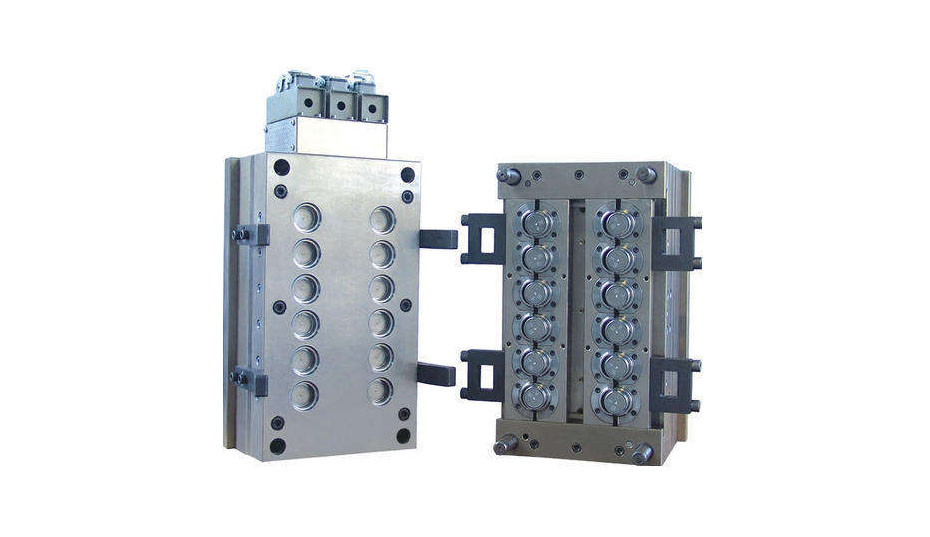
Plastic injection molding is a manufacturing process in which plastic material is melted and injected into a mold to create various parts and components. Some common materials used in plastic injection molding include:
- Polyethylene (PE)
- Polypropylene (PP)
- Acrylonitrile butadiene styrene (ABS)
- Polyvinyl chloride (PVC)
- Polystyrene (PS)
- Nylon (PA)
- Acetal (POM)
- Polycarbonate (PC)
- Acrylonitrile-styrene-acrylate (ASA)
- Polyphenylene oxide (PPO)
In the modern age of manufacturing, plastic injection molding is an incredibly popular method of fabrication for a variety of objects. It’s a process that involves the use of heat and pressure to form plastics into a desired shape. In this article, we’ll be exploring the benefits of plastic injection molding materials, their types, advantages, and considerations when selecting them.
What is plastic injection molding?
Plastic injection molding is a process of manufacturing parts with thermoplastic materials. This process involves the use of a machine, usually an injection molding machine, and a mold. The machine melts plastic pellets and then injects the melted plastic into a mold where it cools and takes the desired shape. The plastic injection molding process is highly efficient and cost-effective, making it popular in various industries.
Benefits of plastic injection molding
Plastic injection molding has many benefits that make it a popular choice for manufacturing. It is cost-effective, as it requires less material wastage. It also offers high precision and accuracy, as the molds used in the process allow for parts to be produced with very high tolerances. Additionally, plastic injection molding is fast and efficient, making it ideal for high-volume production. It also offers a wide variety of materials to choose from.
Plastic injection molding materials
Plastic injection molding offers a wide range of materials that can be used for the manufacturing process. These materials vary in terms of properties such as strength, elasticity, thermal resistance, and cost. Some of the most commonly used plastic injection molding materials are ABS, polypropylene, nylon, and polyethylene.
Types of plastic injection molding materials
Plastic injection molding materials can be divided into two broad categories: thermoplastics and thermosets. Thermoplastics are materials that can be melted and formed into a shape and then cooled to retain their shape. Thermosets, on the other hand, are materials that are permanently hardened when heated, and cannot be melted or reshaped.
Advantages of plastic injection molding materials
Plastic injection molding materials offer many advantages over other materials. They are lightweight, durable, and cost-effective, making them ideal for a variety of applications. Additionally, they are resistant to corrosion, and can be used in a wide range of temperatures. Plastic injection molding materials also offer excellent electrical and thermal insulation, as well as excellent mechanical strength.
Considerations when selecting plastic injection molding materials
When selecting plastic injection molding materials, there are several factors to consider. These include the part’s size, shape, and design, as well as the environmental conditions it will be exposed to. Additionally, it is important to consider the cost of the material, as well as its strength, flexibility, and thermal resistance.
Common plastic injection molding materials
Some of the most commonly used plastic injection molding materials are ABS, polypropylene, nylon, and polyethylene. ABS is a strong and lightweight material that is ideal for parts that require high impact resistance. Polypropylene is also strong and flexible, and is often used for parts that require chemical resistance. Nylon is a strong and durable material that is often used for parts that require high temperatures. Lastly, polyethylene is a lightweight and flexible material that is often used for parts that require electrical insulation.
Plastic injection molding material properties
The properties of plastic injection molding materials vary depending on the type of material used. Generally, they are highly resistant to corrosion, and offer excellent electrical and thermal insulation. Additionally, they are lightweight, strong, and flexible, and are capable of withstanding a wide range of temperatures.
Plastic injection molding material cost
The cost of plastic injection molding materials varies depending on the type of material used. Generally, ABS and polypropylene are the most cost-effective materials, while nylon and polyethylene tend to cost more. Additionally, the cost of the material can also vary depending on the quantity purchased.
Conclusion
Plastic injection molding is an incredibly popular method of manufacturing for a variety of objects. It offers many benefits, such as cost-effectiveness, high precision, and fast and efficient production. Additionally, it offers a wide range of materials that vary in terms of properties and cost. When selecting plastic injection molding materials, it is important to consider the part’s size, shape, and design, as well as the environmental conditions it will be exposed to. Additionally, it is important to consider the cost of the material, as well as its strength, flexibility, and thermal resistance.





